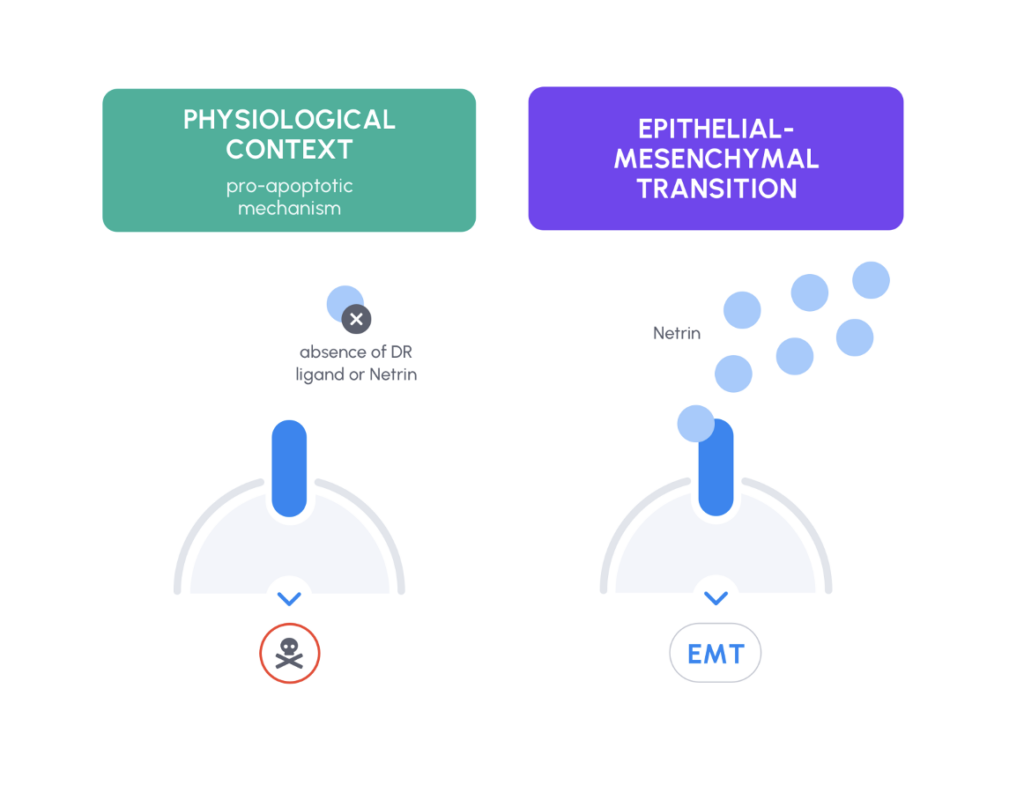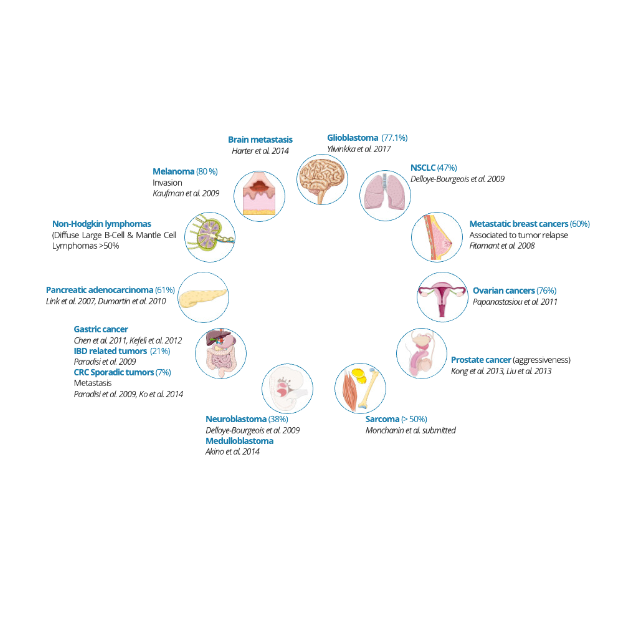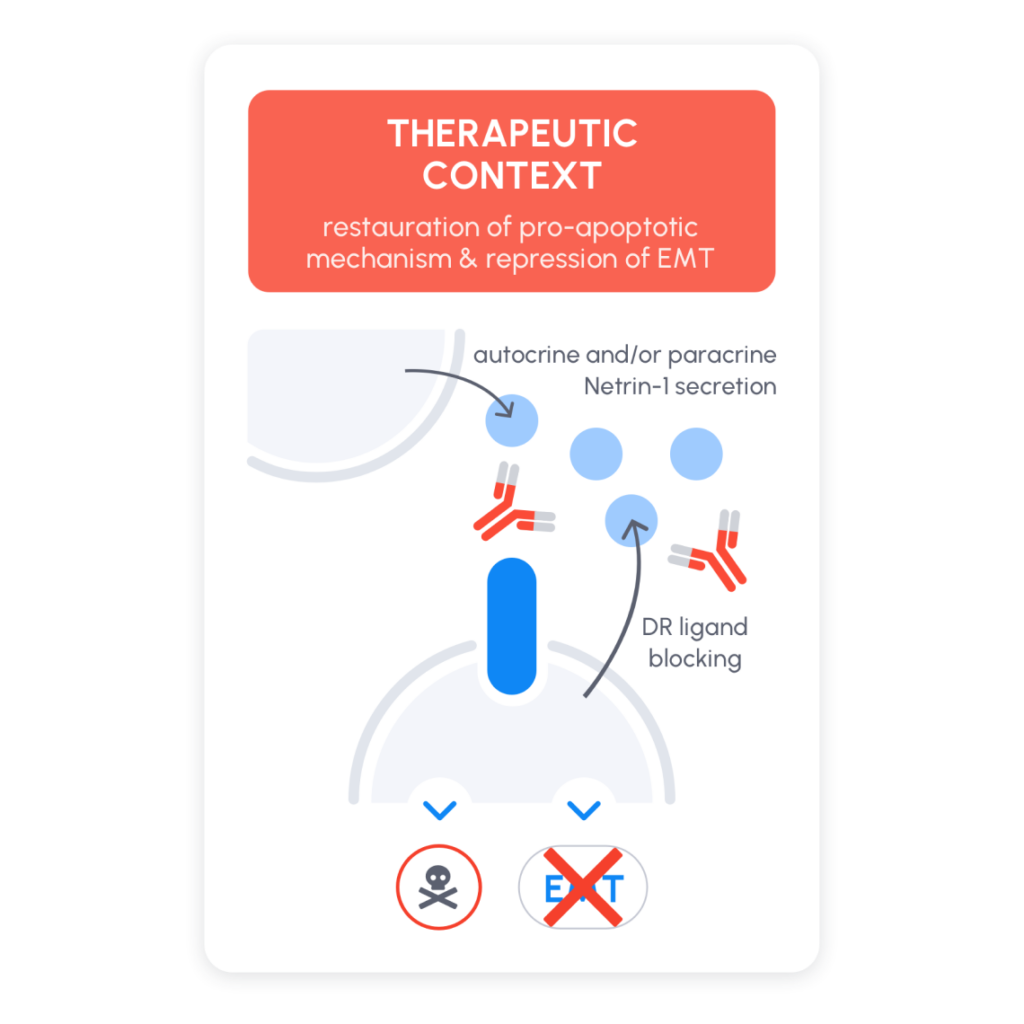Netrin-1, an embyronic cue
reactivated in cancer settings to
promote tumor plasticity


Netrin-1 is well-known for its critical role in embryonic development. It acts as a ligand for the prototypical dependence receptors DCC and UNC5B. These receptors exhibit dual signaling pathways based on the presence of netrin-1:
- In the presence of netrin-1, its receptors trigger various intracellular signals, including Epithelial-to-Mesenchymal Transition (EMT), which enhances cancer cell plasticity (Lengrand et al., Nature, 2023).
- In the absence of netrin-1: Its receptors induce cell death (Mehlen et al., Nat Rev Cancer, 2011 – Grandin et al., Cancer Cell, 2016)


Netrin-1 is up-regulated in multiple tumor types
Netrin-1, a protein normally only secreted during embryonic development, is gained in a significant number of human cancers as a pro-tumoral mechanism.
The diagram below illustrates the types of cancers with upregulation of netrin-1, along with the percentage of tumors overexpressing this protein and corresponding references.


Blocking netrin-1 leads to tumor growth inhibition and impairment of cell plasticity
Experimental silencing or titration of netrin-1 is associated with tumor growth and EMT inhibitions. Upon interference to netrin-1, inhibition of EMT prevents metastasis and potentiates the anti-tumor activity of both chemotherapies and immune-checkpoint inhibitors.


